Castor beans and their scope, is ricin poisoning fatal?
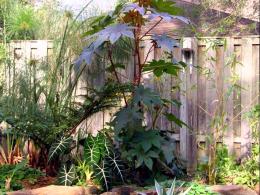
In some regions of Russia, gardeners grow castor bean as an ornamental plant. It not only has a very beautiful appearance, but also has various medicinal properties.
The most dangerous element of such a plant is the seeds, as they contain poison – ricin. A small dose of castor beans if taken orally is fatal.
Content:
- Castor bean, or ricin - description of the plant
- How and where it is used
- Plant propagation
- What are castor beans
- Is ricin poisoning fatal?
Castor bean, or ricin - description of the plant, how and where it is used
The homeland of this representative of the flora is considered to be Ethiopia or Egypt, where it grew as a wild plant. Currently, it is cultivated in China, India, Argentina, Brazil, and some African countries.
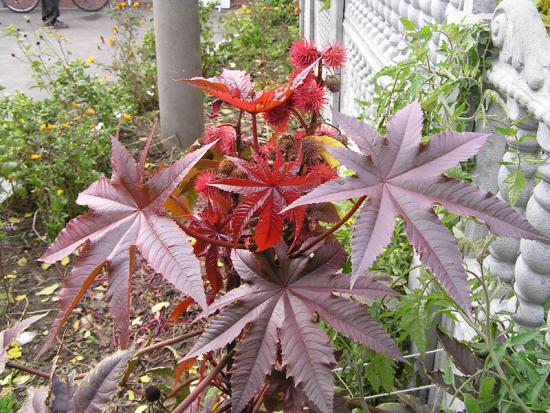
Castor bean belongs to the family Euphorbiaceae, and is a perennial evergreen fast-growing bush with a tree-like stem, reaching a height of 10 m. In central and southern Russia, it is grown as an annual plant, the stems of which do not exceed 3 m.
Let's consider the components of the external structure of the castor bean.
Root system
Tap roots, the roots are quite long and penetrate deeply into the soil.
Stem
The color range is very diverse.You can find green, pink, red, brown and purple stems of the plant, on the surface of which large leaves are located alternately. The shoots are straight and hollow.
Leaves
Large, paw-shaped, dissected into 5-11 compartments, their ends are pointed and their edges are jagged. The length can be 30 - 80 cm, and in some cases reaches 100 cm. The petioles of the leaves are also very long - up to 60 cm.
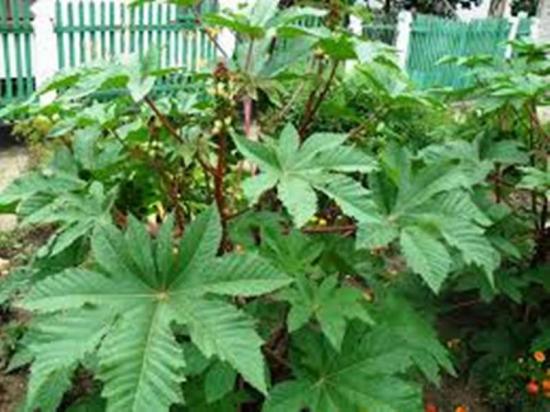
Flowers
Mostly same-sex. In the lower part of the inflorescence there are male (anther) flowers, and in the upper part there are female (pistillate) flowers. They are very small, collected in a racemose inflorescence, which has a cream or white color. Petals are missing.
Unprepossessing appearance flowers is of no interest to florists.
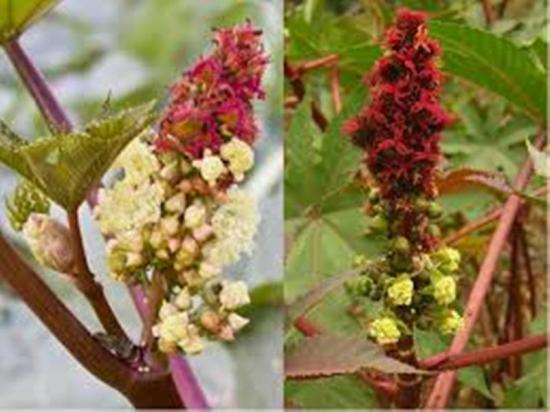
Fruit
They are a tricuspid spherical red box strewn with thorns, which is very reminiscent of a small chestnut. Its diameter is 3 cm. Thanks to this element of the plant, it is widely used in landscape design.
Inside each box there are 1-2 seeds, the external color of which gives them the appearance of a mite, which was the reason for giving the plant the name “castor bean”.
How and where it is used
In order to add aesthetics to the gardens of country houses, florists use low-growing types of castor beans, the leaves and fruits of which are brightly colored. In the southern part of Russia, such a representative of the flora is used to create living hedges.

Use in folk medicine
Castor oil, made from the seeds of the plant, is used in medicine to achieve the following purposes:
- increased intestinal motility during constipation;
- cleansing the body of toxins by accelerating lipid metabolism;
- stimulation of labor;
- regenerating effect on wounds, burns and skin ulcers;
- treatment of hemorrhoids;
- removal of papillomas, corns and calluses.
In folk medicine, a poultice from the leaves of the plant is used as an analgesic and antipyretic, and a decoction roots used in the treatment of rheumatic pain, neurological pathologies, gout and boils.
In cosmetology
Cosmetologists recommend using masks based on castor oil in the following cases:
- treatment of hair diseases (dandruff, hair loss, split ends, oily and dry hair);
- awakening dormant bulbs of eyelashes, eyebrows and hair, which is effectively used for their weak growth;
- moisturizing facial skin, eliminating superficial wrinkles and age spots;
- brittle nails.

In industry
The industry uses technical oil, obtained from castor beans. It has the property of not hardening for a long time, so it is well suited for lubricating machine parts and machine tools.
This product is widely used in perfumery in the production of hair oils and soaps, paint and varnish production and the food industry (flavors).
What are castor beans
Castor bean seeds resemble large beans and contain 40-60% fatty oil, which is used to obtain castor oil. For this reason, they are also called castor beans.

Their color depends on the type of plant and can be gray, pink, brown or dark red. The composition of the seed kernel includes highly toxic substances such as ricin (5%) and ricinin (1%), which makes them poisonous if used improperly.
Plant propagation
The plant reproduces only by seeds, which must be planted from the last days of March to mid-June.For this purpose, take 1 liter plastic containers and fill them halfway with soil, and then plant castor beans in a hole 1-2 cm deep.
To ensure rapid germination, it is first recommended to soak them overnight in a special growth stimulating agent.

According to gardeners, it is better to carry out this procedure in mid-April, since the seeds sown at this time grow well and develop into a powerful bush. Out of 10 pieces, no more than 6 usually germinate.
If after 3-4 days you do not notice shoots, then you need to carefully remove the peel from the surface with tweezers. seeds. You can also plant directly into the ground. It should be remembered that the plant does not tolerate frost, so it is better to carry out the procedure in May.
Usually 2-3 seeds are placed in a hole. It is also necessary to ensure that the soil is thoroughly moistened.
Is ricin poisoning fatal?
The toxic effect of ricin on the body does not occur when the seeds come into contact with the skin. In rare cases, people with particularly sensitive skin may experience allergic reactions that appear immediately after contact with the irritant.
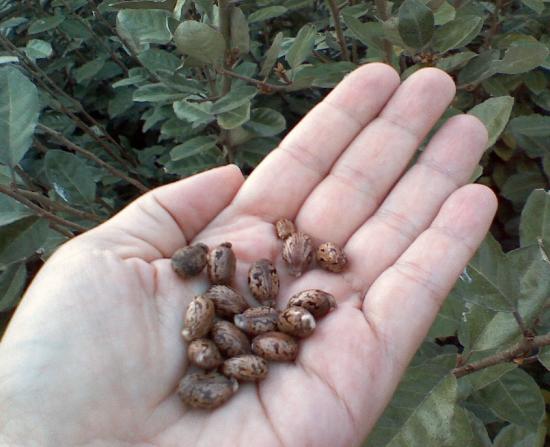
Oral consumption of castor beans at a dosage of 0.003 mg per 1 kg of weight is considered fatal. For children, this dose is contained in approximately 6 seeds, and for adults – in 20.
Symptoms of poisoning appear within 15-24 hours. When inhaling toxin vapors, the clinical picture develops within 4-8 hours.
Eating pure seeds can lead to various pathological conditions:
water-electrolyte imbalance;
- diarrhea with blood;
- intestinal colic;
- dysfunction of the urinary system and liver. In the latter case, toxic hepatitis is diagnosed;
- convulsions;
- insufficient insulin production;
- a sharp decrease in blood pressure;
- gastrointestinal bleeding;
- retinal hemorrhage;
- nausea and vomiting;
- state of prostration.
If you do not seek medical help in a timely manner, after 6-8 days a person’s liver, kidneys and spleen fail, which causes death.
The prognosis for the consequences of such poisoning is always unfavorable, since the survivor experiences irreversible destruction of tissue proteins, which causes irreparable damage to health.
If castor beans grow in your garden or are an element landscape design, then be sure to warn your children and everyone you know about the negative health consequences of consuming seeds.
There are currently no antidotes against such a substance and it is impossible to cleanse the body of it, so treatment will last a very long time, and at the end of it the person will have to follow a strict diet and be constantly under the supervision of doctors.
You will learn more about growing castor beans by watching the video:


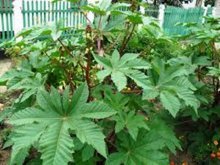
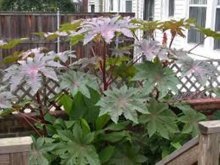
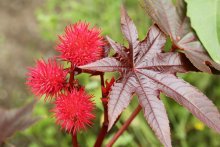
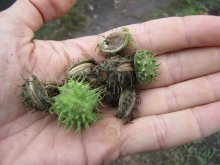

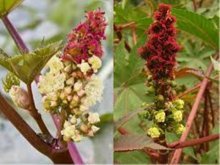
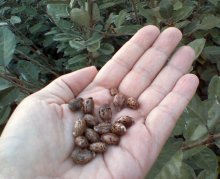
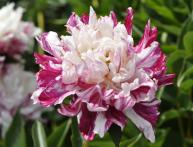
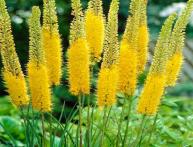
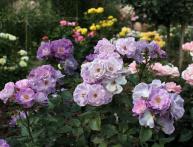
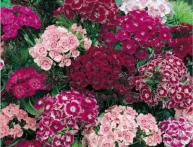

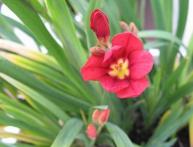
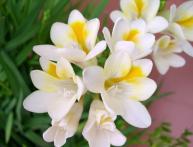
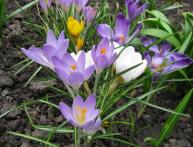
Comments
We have Castor bean growing in our flowerbed and it is quite a beautiful plant. Very high. I didn’t know about the harmfulness, I will take it into account, since we probably won’t plant a lot of castor beans on the site now.
A very beautiful plant, I would never have thought that it could be poisonous to humans. No, in my city this kind of thing no longer grows in our city; before, as far as I remember, it seemed to be like that.